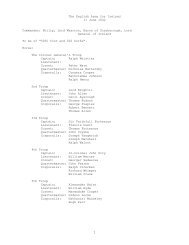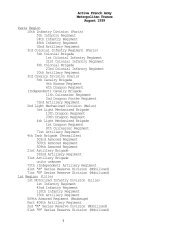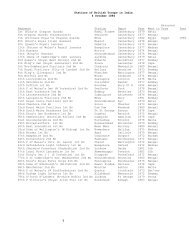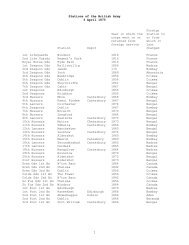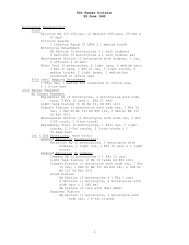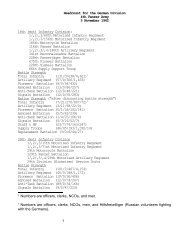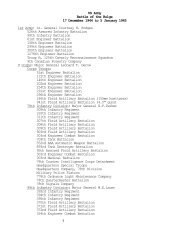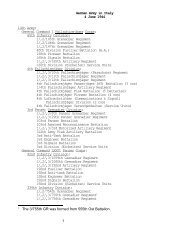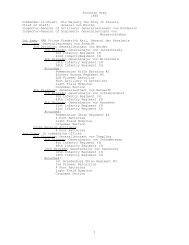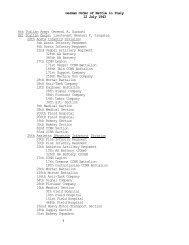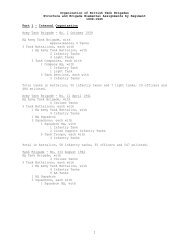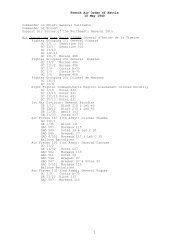Company Officer's Handbook Of The German Army - Command and ...
Company Officer's Handbook Of The German Army - Command and ...
Company Officer's Handbook Of The German Army - Command and ...
You also want an ePaper? Increase the reach of your titles
YUMPU automatically turns print PDFs into web optimized ePapers that Google loves.
Section V.<br />
COMBAT TEAMS<br />
27. GENERAL<br />
A high degree of flexibility is a characteristic of <strong>German</strong> organization,<br />
<strong>and</strong> it is best exemplified in the fluid composition of combat<br />
teams, or "battle groups" (Kampfgruppen). Consequently, <strong>German</strong><br />
tables of organization, though useful for a basic underst<strong>and</strong>ing of<br />
unit strength, are of little practical value for operational purposes.<br />
A <strong>German</strong> division, whether it is on the offensive or the defensive,<br />
is organized into one or more combat teams. While 'it is important<br />
to establish the order of battle of each <strong>German</strong> division as it is<br />
engaged, it is even more important to determine its disposition by<br />
teams.<br />
In the <strong>German</strong> conception, an infantry combat team may vary<br />
in size from a reinforced rifle company to a reinforced regiment.<br />
Normally, however, a team consists of a regiment of infantry, a<br />
battalion of artillery, an engineer unit, <strong>and</strong> an antitank-antiaircraft<br />
detachment. Divisions that include tanks will attach tanks<br />
by companies or battalions to combat teams. Sometimes troops<br />
of different divisions are mingled in forming a team, units from one<br />
team may be fransferred to another, or a team may be dissolved<br />
<strong>and</strong> its components assigned to the remaining teams in the division.<br />
<strong>The</strong> flexible character of a <strong>German</strong> combat team is further emphasized<br />
by the fact that it is normally identified by the name of<br />
its comm<strong>and</strong>ing officer (see fig. 58, p. 73) rather than by the designation<br />
of its principal unit. Although the components of a team<br />
may change considerably within a short time, its designation<br />
does not change until its comm<strong>and</strong>ing officer is relieved or reassigned,<br />
or until the team is dissolved. It cannot be assumed, therefore,<br />
that the strength <strong>and</strong> fire power of a <strong>German</strong> combat team<br />
remains constant over a period of days merely because its designation<br />
remains unchanged.<br />
<strong>The</strong> flexibility typical of the infantry combat team is applied<br />
in forming combat teams with the infantry (panzer-grenadier) <strong>and</strong><br />
tank components of the <strong>German</strong> armored divisions. In the armored<br />
division the team is likely to consist approximately of one infantry<br />
70



